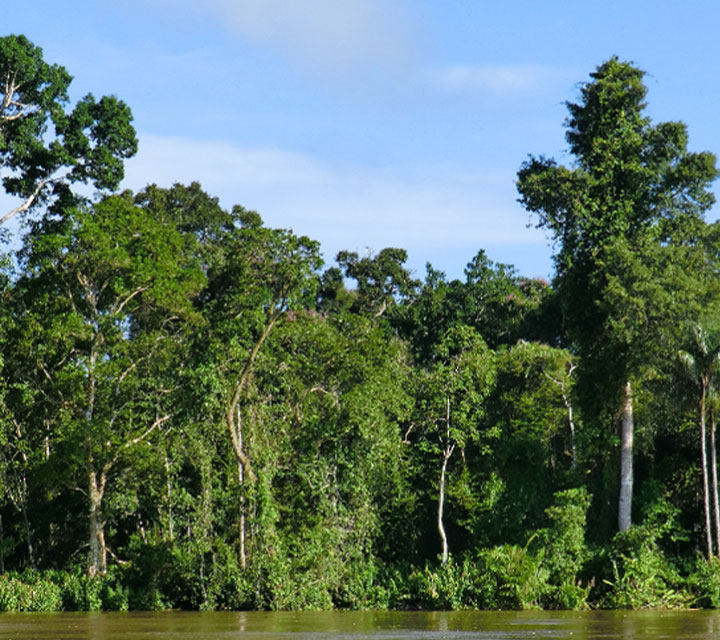Baseline flora assessment and preliminary monitoring protocol in the Katingan peat swamp.
Report by the Orangutan Tropical Peatland Project (OuTrop) to help satisfy the CCBA Standard checkpoints related to floral biodiversity and facilitate the acquisition of Approved/Gold Standard status for the proposed Forest Carbon Project in Katingan Regency.
Preamble
The Climate, Community and Biodiversity Alliance (CCBA) Standards are intended to “foster the development and marketing of projects that deliver credible and significant climate, community and biodiversity benefits in an integrated, sustainable manner. Projects that meet the Standards adopt best practices to deliver robust and credible greenhouse gas reductions while also delivering net positive benefits to local communities and biodiversity”. Many of the CCBA Standard’s checkpoints are either focussed on, or include, aspects of biodiversity, which includes forest flora.
The Orangutan Tropical Peatland Project (OuTrop) was contracted by PT. Rimba Makmur Utama/Starling Resources to help satisfy the CCBA Standard checkpoints related to floral biodiversity and facilitate the acquisition of Approved/Gold Standard status for the proposed Forest Carbon Project in Katingan Regency. This follows on from a previous contract, in which OuTrop provided an assessment of faunal biodiversity and ape population density in the area. Established in 1999, OuTrop is a UK-based group of scientists who carry out research, ecosystem monitoring and conservation management in the peat-swamp forests of the River Sabangau catchment and surrounding areas. Our long-term research focuses are: floral and faunal biodiversity; ecological monitoring; forest ecology, dynamics, phenology and restoration; the distribution, population status, behaviour and ecology of the forest's flagship ape species – the orangutan and agile gibbon – and provide scientific feedback to conservation managers and work with our local partners to implement successful conservation programmes.
In this report, we provide the necessary information to satisfy the biodiversity sections of PT. Rimba Makmur Utama/Starling Resources CCBA application, as pertaining to forest flora. We (i) describe the baseline flora and forest structure of the area, identify High Conservation Value (HCV) floral species and threats to these; (ii) assess the project’s impacts on forest flora and structure and recommend floral biodiversity objectives for the project; and (iii) propose a preliminary floral monitoring proposal for assessing the long-term impacts of the project’s activities on the area’s floral biodiversity and HCVs.
Executive Summary
Borneo is one of the world’s most floristically diverse regions, and peat-swamp forests harbour a significant proportion of this diversity. Due to its very high carbon content, great potential exists for REDD projects in peat-swamp forests, which can potentially provide much-needed revenue for conserving these forest’s unique flora.
PT. Rimba Makmur Utama / Starling Asia’s proposed REDD+ concession area covers 227,260 ha of mostly forested peat-swamp forest in the Katingan and Kotawaringan Timur Districts, Central Kalimantan, Indonesia. During November-December 2010, we assessed the flora of this forest, in order to provide a baseline description of the area, and identify any HCV species and the threats these might face. These surveys confirmed that Katingan is home to a highly diverse floral community, including up to 312 species of flora, comprised of 219 tree and 93 non-tree species. Comparison of floral diversity indices for Katingan and other peat-swamp forests indicate high floral diversity in Katingan. Data on tree size distributions, biomass and species abundance are presented. Abundant tree species include a number of important orang-utan foods. Included among the tree species in Katingan are at least six HCV species, including the Critically Endangered Shorea balangeran and Endangered S. teysmanniana. Estimates for potential population sizes of these species in Katingan, based on plot data, indicate that the concession clearly satisfies both the vulnerability and irreplaceability criteria for classification as a Key Biodiversity Area.
This floral diversity in Katingan is currently facing a variety of threats, however, which need to be countered if the conservation of biodiversity and HCVs in the area is to be successful. The most important threats to the area’s biodiversity and HCVs are peat drainage and subsequent fire, illegal logging, gold mining, and potential conversion to oil palm plantations and coal concessions. These threats are attributed to 14 active drivers and six agents of biodiversity loss in Katingan.
Without the project, the most likely land-use scenario is that illegal logging, hunting, peat degradation and other harmful activities will continue, and that risk of fire and encroachment from gold mines and oil palm will increase. This will lead to severe negative impacts on the area’s floral diversity and declines in the population size of all the floral HCV species. The majority of the project’s activities will be directly beneficial to floral diversity and HCVs in the area, and the overall impact of all the project activities on floral diversity and HCVs will be overwhelmingly positive.
We recommend eleven floral biodiversity objectives be adopted by the project proponents. Further, we propose a preliminary monitoring programme to demonstrate whether the Project has achieved the stated conservation objectives and has had net positive impacts on floral diversity and HCVs. A full floral monitoring programme will be submitted within a year of acceptance to CCBA Standards. This programme will include re-surveys of plots surveyed herein, to provide information on changes in species composition, size distribution, biomass and HCV species’ abundance.
Based on these results, it is clear that Katingan is a crucial area for flora conservation. It is also clear that this diversity faces a number of threats, that the project activities will benefit flora conservation and that these activities are very unlikely to occur in the absence of the project. We therefore conclude that the implementation of this project is important for floral diversity conservation, both in Borneo and globally.
Buy carbon credits from Katingan
Climate change is a global challenge that requires global action. We can help you meet your commitments to deliver a brighter future.



